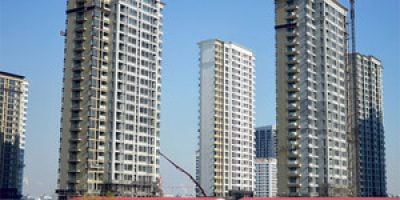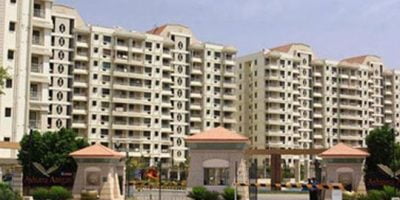
In Pulicat, 56 km away from Chennai, an astounding transformation is taking place — a resort with grand individual villas and at least two residential townships are to be constructed soon. The catch? It is at the lakefront of the Pulicat Lake and is dangerously close to the lagoon in the ecologically sensitive area. Another catch – government departments and agencies are aware of this development, which private builders are more than happy to market and cash on.
This is not new. In 2002, when Pallikaranai marsh was finally declared a conservation site, realtors were happy to flock to the area. How did they manage to build atop the marsh? The conservation site status was withdrawn at an unknown point and there began the market for green homes. An activist who refused to be named said, “The moment the government decides to take action on a lake or an area with rich vegetation, real estate agencies rejoice because the demand and prices increase for townships and residential plots near these areas. Lake views are the real estate dream.”
Here’s where real estate affects the waterbody from the process of construction to occupation by residents by converting it into a residential area.
Speculative buying
When a piece of land is up for sale, usually agricultural, the news goes out to a cartel of buyers. The coveted piece of land is the one with plenty of water availability. The buyers in the cartel independently negotiate areas adjacent to the piece of land. In the event of procuring a 100-acre piece of agricultural land, the land is left fallow for three-four months. Once the land is drained of all water, the agricultural land is naturally converted into non-agricultural land. And that paves the way for the real estate agents to build on farm lands and eventually decimate the water content of areas rich in the resource.
No Objection Certificates
“It’s extremely easy,” says John K, a developer based in Chennai, “to obtain a No Objection Certificate from the Tahsildar.” An NOC is required to clear the land of any issues such as blockage of waterways, irrigation channels or inundation. A sum of Rs 5,000 must be furnished as a bribe to the tahsildar, according to the developer. The new regularisation rules as discussed in Part 1 and Part 2 of the series detail the illegal requirements to regularise unapproved layouts which had not followed the regulations by the government.
“But what is the point of regularising buildings from 2010 or even later which have already violated these rules and obstructed waterways?” asks VBR Menon, the advocate who filed the PIL which brought back the blanket ban on unapproved plots and layouts. “These are 90 percent of the constructions today. A mere 10 percent may have followed the rules but we don’t even know that for sure,” he says.
The slow decline of rainwater harvesting systems
“The state government was the first in the country to pass the Chennai Groundwater Regulation Act in 1987, which sought mainly to curb the commercial groundwater exploitation within the city limits. In 1998, borewell digging from Adyar to Mahabalipuram was banned. In 2001, rainwater harvesting became mandatory in multi-storeyed buildings. But due to irregular monsoons, very little can be used,” says Joseph Thomas, a researcher at the IIT Madras Research Park.
After regular droughts, in August 2003, the government passed an ordinance making RWH mandatory for all buildings (existing and new) in the city and throughout the state. It further set a deadline of 31 October, 2003 for this process to be completed. But RWH is long forgotten due to the effects of drought, irregular monsoons brought on by climate change. “Very few homes have systems currently because of heavy reliance on borewells. It’s an easier quick fix,” says Thomas.
A dangerous substitute for rainwater harvesting
Many know little about the extremely worrying consequences of borewells on water recharge areas and buffers which have already been encroached on. Apartment residents have resorted to indiscriminate use of borewells to meet their water needs. Real estate developers, while having to follow compulsory rainwater harvesting regulations, are also resorting to borewells to extract water.
According to a 2006 publication, Vaidyanathan and J Saravanan summarised the action of the government in this regard. “Since the 1970s it is evident in the sinking of increasing numbers of open wells and deep bore wells. This trend, a symptom of the increasing water scarcity in the city, led to a progressive decline in groundwater levels as well as seawater intrusion in coastal aquifers,” it says.
The government, therefore, had no other choice but to allow the use of borewells provided the ground water was used only for purposes other than drinking and cooking. But with the advent of RO filters, residents in prime aquifer recharge areas used the filtered groundwater as drinking water. This, as a result, has led to a lower water table over the years.
The consequences of over-extraction
The total dissolved solids level, which determines the drinking water standards of groundwater, has deteriorated over the past five years, rendering water in various areas unusable. TDS levels are high when dissolved solids come from organic sources such as industrial waste, sewage and rocks and air that may contain calcium bicarbonate, nitrogen, iron phosphorous, sulphur, and other minerals. Many of these materials form salts, which are compounds that contain both a metal and a non-metal. These salts turn the water saline. The most important factor that determines whether water can be used for drinking is its saline concentration.
According to the Board of Indian Standards, the acceptable TDS level is between 500-600. But most places in Chennai have exceeded this number, and stand at a whopping 1,000-1,200. None of this water can be used for drinking. “There are two reasons. The aquifer quality may naturally be at that TDS level,” says Packialakshmi, an assistant professor at the Department of Civil Engineering, Sathyabhama University.
“But the major reason we should all be worried about is over-extraction. In Tambaram and Perumbakkam water tankers extract the most amount of ground water. Fifteen years ago, the water quality was good in both areas, and water could be extracted barely 25-50 ft from the ground,” she says.
Due to the indiscriminate use of tanker lorry water by industries and high rises, many from the lower economic backgrounds have had to suffer. Slums and housing board areas which depend on sumps can no longer do so because the groundwater has drastically dropped. Borewells in middle and upper-class residential colonies have extracted most of the water. “All that’s left is fossil water – water collected during ancient periods that should not be touched at all. Like crude oil,” says Thomas.
“Water is common property and we must use it accordingly. We all forget that. And equity is just as important as regular water supply,” Packialakshmi says.
Source:-firstpost.


